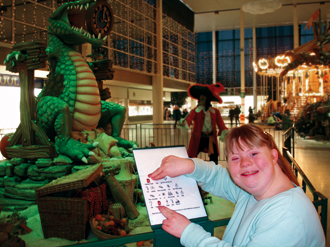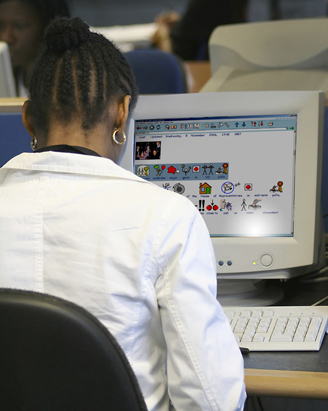- You are here:
- Home
- About Symbols
- Guide to good symbol content
- Choosing how to symbolise
Guide to good symbol content
Choosing how to symbolise your content
Methods
There are a number of different methods you can use to provide symbol support for your content.
The methods that you choose will depend on the level of symbol support that your content requires. This guide focuses on four of the most popular methods.
The four different methods of symbolising, each provide a different level of support. As described in below, there are different factors that will affect the method you choose.
The main factor is deciding who your content is aimed at and who will be reading it, i.e. will your content need to be accessible to readers of all literacy levels(i.e. symbol readers and non-symbol readers), or will it only be read by symbol readers?
There are three methods for providing inclusive symbolisation:
- Key symbols
- Symbol highlight
- Symbol summary
If your content is aimed solely at symbol readers, you will very probably want to fully symbolise your content.
Read more about the Methods
-
Key symbols One or two symbols per concept which can be used to convey a simple message
-
Symbol highlight Three to six symbols which illustrate the basic message of a passage of text
-
Symbol summary Up to four symbol sentences that can support text by illustrating a summary of its basic messages
-
Fully symbolised content Providing a symbol for every information-carrying word within the content
Content factors
In order to determine the level of support your content needs, and therefore choose the most appropriate method with which to symbolise your content, there are three factors you will need to consider first.
One of these factors may be more influential than the others in terms of determining the method of symbolising you choose, depending on the circumstances surrounding your content.
-
Who will read your content? Will it be read exclusively by symbol readers (i.e. struggling and emerging readers), or by readers of all literacy levels?
-
How will your content be available? In what media will your content be available? Will this limit your layout in terms of space?
-
What do you want to write? Are you writing your content from scratch, or providing symbol support for existing content?
Who will read your content?

It is important to be clear about who your content needs to be accessible to before choosing the method with which you will provide your symbol support. You may be looking to increase the accessibility of existing content (e.g. a letter, a legal document, a story) by adding symbol support in order for the content to be accessible to readers of varying levels of literacy.
If your content needs to be fully accessible to readers of all literacy levels (i.e. symbol readers and non-symbol readers), you can choose from key symbols, symbol highlights, and symbol summaries, depending on the level of symbol support you want to provide.
If your content is aimed primarily at symbol readers, fully symbolised content would be most appropriate.
How will your content be available?

It is important to consider the way in which your content will be presented. For example, will your content be presented as a written document, such as a leaflet or letter, as a sign on the wall or as content on a website?
If you are creating a standard leaflet (e.g. a sheet of A4 folded into three), you may not have enough space for fully symbolised content. Consider using symbol highlights or a symbol summary in conjunction with the original text, or producing a separate fully symbolised document.
If you are creating a sign to guide people around a building, space will be at an absolute premium and, along with simple text for non-symbol readers if necessary, only key symbols should normally be used.
If you are writing symbolised text for a website, the space you have to work with is likely to be much more flexible, meaning that you will be less restricted.
![]() Symbolised text takes up a lot more space than non-symbolised text.
Symbolised text takes up a lot more space than non-symbolised text.
What do you want to write?
If you are creating symbol-supported content, as with any writing, it’s important to have a clear idea of exactly what it is that you want to say before you begin.
When you are writing text that will be symbolised, it is essential that your sentences are as short and simple as possible, and that they are written in very plain and simple language. This is discussed in detail in section Creating symbol summaries and fully symbolised content.
When you have a good idea of what you want to say and how best to say it in plain English, you can choose which methods of symbolising will be the most appropriate.
The different methods of symbolising
- Key symbols
- Symbol highlights
- Symbol summaries
- Fully symbolised content
Guide home | Next - Key symbols
